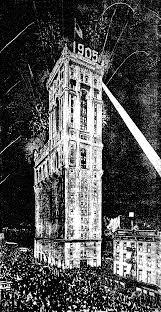My father died in January of 1938, when I was just eight years old. Two months later my mother and I moved from Wisconsin to California to stay with her uncle who owned a ranch in Palm Springs, complete with a swimming pool. I had not yet learned to swim but could float and dog-paddle.
One Sunday morning I was in the shallow end of the pool, floating around to my delight, when unbeknownst to me I drifted out to where the water was substantially over my head. When I suddenly realized where I was, panic prevailed. I screamed for help, and a tall slim figure sitting alongside of the pool jumped to his feet, dived into the pool, and pulled me to safety.
When I stopped gasping and crying, my cousin introduced me to the handsome stranger and his date, Ronald Reagan and Jane Wyman. Friends of my uncle and cousin, they had come to the ranch the night before and, fortunately for me, in addition to his dramatic abilities, Mr. Reagan’s background included an earlier career as a lifeguard back in Illinois.


